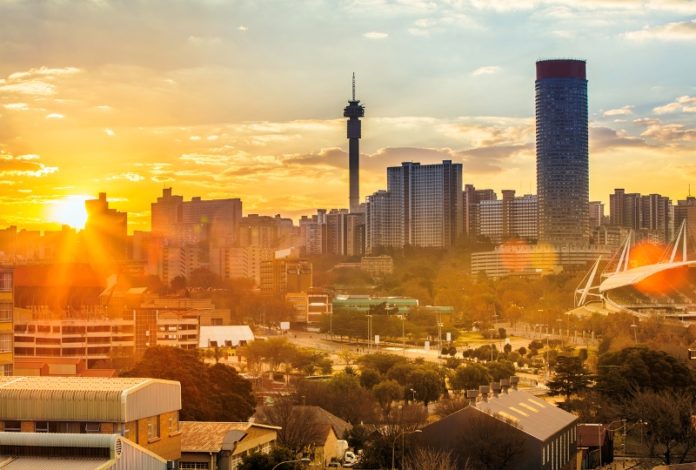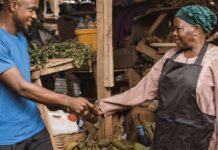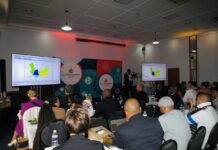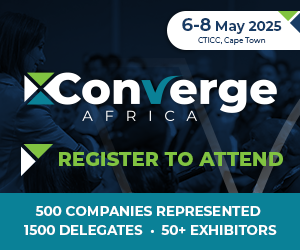
Infrastructure spending and areas dedicated to specific kinds of manufacturing are intended to drive economic growth in the Gauteng Province. Both concepts fall within broader national plans to boost industrialisation through various kinds of Special Economic Zones (SEZs) and infrastructural initiatives.
A number of national and provincial planning frameworks inform the planning of Gauteng’s economic future. These include the National Development Plan, Growing Gauteng Together (GGT 2030), Gauteng 2055 Vision and the City of Johannesburg’s Growth Development Strategy and Spatial Development Framework.
The Gauteng Provincial Government will spend R60-billion on building and maintaining infrastructure in the five years to 2025. The provincial authorities further estimate that about R100-billion will be spent on infrastructure projects in the province by a variety of state-owned enterprises (SOEs) and national departments in the next decade. The overall estimate for the injection of capital related to infrastructure, including private initiatives, is calculated at R760-billion in the period to 2030.
A 15-year Gauteng Infrastructure Master Plan has been adopted, but multiple sources of funding are needed for the plan to succeed in areas such as the provision of water, logistics, broadband connectivity, public transport, energy and the reshaping of cities to accommodate citizens in a better way than was the case under apartheid. A World Bank report has shown that a 10% increase in infrastructure spending results in a 1% growth in GDP.
Gauteng began laying the groundwork for creating a research base for urban planning as far back as 2008 when the Gauteng City-Region Observatory (GCRO) was established. A partnership between the University of Johannesburg (UJ), the University of the Witwatersrand, Johannesburg (Wits) and the Gauteng Provincial Government, the GCRO does research on which planners can base their projections.
A Township Economic Development Bill is to be introduced in the provincial legislature to reduce the amount of red tape faced by small businesses. Growth strategies are to be integrated to ensure that township SMMEs and black industrialists are considered when programmes such as the focus on 10 “high-growth sectors” are implemented. Youth employment will be factored in to plans to support those sectors.
Corridors and SEZs
Five corridors have been identified for development purposes. Each has core existing economic activities which will be supported and expanded. In addition, new activities will be encouraged to diversify the area’s economic potential and create jobs.
The Gauteng City-Region plan to have three fully operating Special Economic Zones (SEZs) by 2025. These will be based in Ekurhuleni, Tshwane and Sedibeng with an additional Special Agro-Processing Zone located in the West Rand. The province intends reviving 15 industrial parks and creating 12 agri-parks and five agro-processing facilities across the province.
By 2030, Gauteng aims to have the biggest inland logistics hub and dry port in Africa – the Transnet Tambo-Springs Logistics Gateway.
These area-based infrastructure and logistics projects are expected to contribute to giving the province a competitive edge in the 10 economic sectors that have been identified as “high-growth”. This in turn will create opportunities for small, medium and micro-enterprises (SMMEs) and township businesses.
The Tshwane Automotive Special Economic Zone (TASEZ) is a key project within the Northern Corridor. It is a project of the Gauteng Province, the Department of Trade, Industry and Competition, and the City of Tshwane. The implementing agent is the Coega Development Corporation (CDC), the developer and operator of the Coega Special Economic Zone (SEZ).
The TASEZ, branded as “Africa’s First Automotive City”, has a mandate to promote economic participation for SMMEs and create employment in the region. Sectors targeted include security, ICT maintenance, facility maintenance, construction, automotive supply chain, marketing and advertising, catering and events.

The benefits that arise from clustering of businesses in related sectors is a key element of an SEZ. Both the Nissan and BMW plants are expanding and Ford is investing in Silverton.
An Incubation Centre for SMMEs has been launched at Nissan’s assembly plant in Rosslyn. The facility supports small enterprises through subsidised rental and mentorship and training. Management of the centre is done by the Automotive Industry Development Centre (AIDC), a subsidiary of the Gauteng Growth and Development Agency (GGDA). The Jobs Fund contributes to financing the project.
Other focus sectors in this corridor include agriculture and agro-processing, defence, the aerospace and aviation industries together with the innovation, research and development cluster anchored around the Gauteng Innovation Hub, universities and research institutes.
The OR Tambo SEZ is at the centre of the Eastern Corridor, which underscores Ekurhuleni’s strengths in manufacturing and logistics. The OR Tambo SEZ has launched the biggest food processing operation in the southern hemisphere (and the world’s second-largest refrigeration plant). With a special focus on export-oriented value-added industry, the OR Tambo SEZ leverages its connection to the country’s busiest airport. The focus of this SEZ is on agro-processing, jewellery manufacturing and mineral beneficiation as well as the development of hydrogen fuel cell technology. This is another subsidiary of the GGDA.
Other Eastern Corridor sectors include rail and bus manufacturing (including the PRASA-Gibela rail manufacturing hub in Nigel), defence and aerospace and food and beverages.

The Western Corridor encompasses the economy of the West Rand and has been targeted for the creation of new zones for development, housing, and industry. The aim is to diversify away from mining towards renewable energy, tourism, bus manufacturing and agro-processing. The release of 30 000 hectares of land by Sibanye Gold has unlocked the potential for major investment projects. A Smart City is envisaged for Lanseria and the area to its west.
Where steel used to be the anchor industry in the Southern Corridor, today the aim is to build new industries through an SEZ that will cover both sides of the Vaal River and thus extend into the Free State Province. Among the investments that will create impetus are the Savannah City development, Vaal River City development, a cargo airport and logistics hub, the AB InBev investment project, the Gauteng Highlands water project, the Vaal Marina development and logistics and mining investments in the Lesedi Local Municipality, which includes Heidelberg and Nigel.
Metropolitan drivers
The Central Development Corridor revolves around the City of Johannesburg as the hub for financial services, information and communication technology, services and pharmaceutical sectors.
New investments are planned for the Jo’burg Inner-City and the South, from Soweto, N12 which includes Masingita City, Southern Farms to Orange Farm. The City of Johannesburg has recently completed a review of its policy of nodal development with a view to creating a fairer spatial framework for the city than that created by the racist planning laws of the apartheid era.
As Member of the Mayoral Committee Lawrence Khoza puts it, “Nowhere is the legacy of our painful past expressed more vividly than in the racially divided spatial character of South Africa’s cities.”
Johannesburg has designated eight zones:
- Inner-city: high-intensity use.
- Metropolitan: mix of land uses which currently includes Sandton and Rosebank and will expand to include parts of Soweto.
- General urban: designed to be transformative, mix of economic and residential use.
- Local economic development: interventions planned to create economic opportunities in areas with poor facilities (Zandspruit, Orange Farm, parts of Soweto).
- Suburban: lower density with local mixing of land use (homes, offices, offices, shops).
- Dark green: a limit of 8% coverage of buildings.
- Peri-urban/agriculture: low density.
Another transformative initiative being undertaken in Johannesburg is the use of Transit-Oriented Development (TOD) to drive investment and development. Implemented by the Johannesburg Development Agency (JDA), the TODs are another attempt to improve the lives of people living in previously neglected areas.
One such TOD is the Jabulani TOD in Soweto where a seven-phase project is underway that includes a multi-purpose hall, a library, counselling facilities, sports facilities, offices and meeting rooms. A pedestrian bridge over a railway line and new roads underscore the transport element, with the facilities near the Bus Rapid Transport (BRT) route that runs through Soweto to central Johannesburg.
TODs are designed to attract further investment and are supported by the Neighbourhood Development Partnership Grant from National Treasury.

Other projects undertaken by the JDA range from the upgrading of Constitution Hill, the Faraday Station precinct, work on the Fashion District and pavements of the inner city, renovation of the Drill Hall and the big Newtown make-over.
Johannesburg has been the focus of a major tax incentive initiative, the Urban Development Zone (UDZ). The inner city of Johannesburg, comprising just less than 18 km², is the largest UDZ in South Africa and it is expanding its footprint in response to significant successes that have been achieved.
The Johannesburg Social Housing Company (Joshco) has plans to provide affordable rental accommodation in 12 inner-city buildings that were recently identified for that purpose. But the main target for the UDZ is private investors.
The City of Johannesburg has identified the following nodes for development:
- Carlton Precinct: Johannesburg’s tallest building attracts tourists; undergoing revamp; Sky Rink TV and film studio being developed; conference centre planned.
- Park Station: intermodal node catering for cars, buses, rail commuters and taxis; Gautrain link to OR Tambo International Airport; wide variety of users.
- Central park: JDA has worked on greening and community engagement and wants the park to be a symbol of the successful city.
- Doornfontein/Ellis Park railroad corridor: planned retail hub and student village.
- Fordsburg: interior design focus; more offices and accommodation can be built.
- Newtown: cultural precinct with the potential to cater to students and university departments with specialised offices and spaces.
- Hillbrow, Berea, Parktown, Bellvue, Yeoville: creation of new public open space; opportunities for office and hotel developments.
National Infrastructure boost
An Investment and Infrastructure Office has been created in the Presidency. It is headed by the former Gauteng MEC for Economic Development, Dr Kgosientso Ramokgopa. In 2020, 51 infrastructure projects with a total investment value of more than R340-billion were gazetted.
Ten of the 18 affordable housing projects listed are located in Gauteng. These include Malibongwe Ridge, Green Creek, Mooikloof Mega Residential City, Fochville Extension 11 and Germiston Ext 4 Social Housing Project. A large project is underway in Tshwane, Salvokop Precinct, to house government departments and commercial buildings.
The energy projects identified by national government will have an impact on Gauteng, the country’s biggest consumer of energy. Priorities include embedded generation and the huge water supply project, Phase 2 of the Lesotho Highlands Water Project, will create many opportunities.








